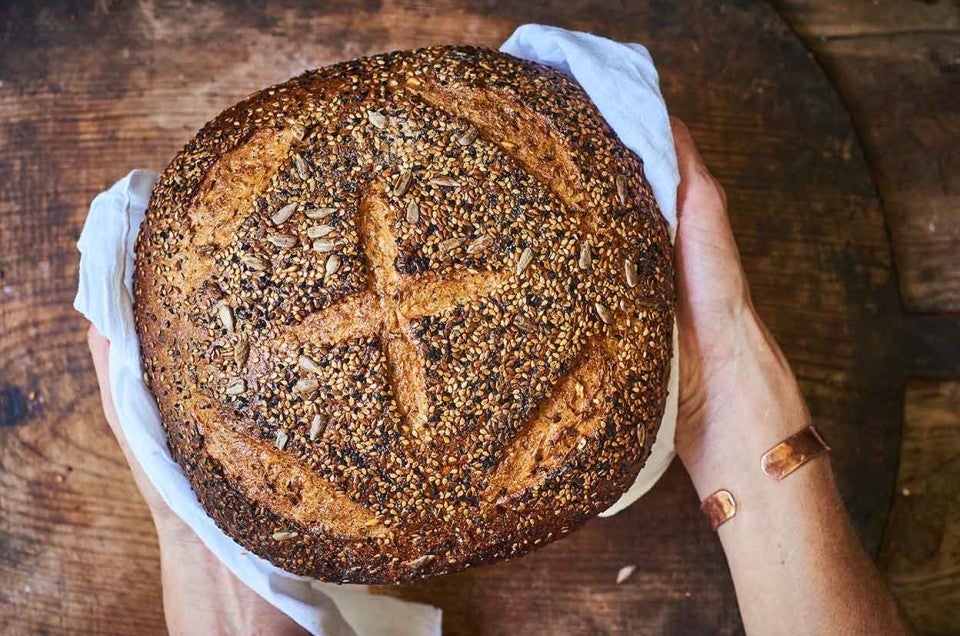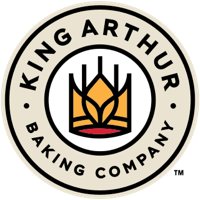Ask the Bread Coach: Just how dark should I be baking my bread?
For flavor, texture, and looks, the Coach wants you to go almost — almost — burned.


Readers of the first installment of Bread Coach may remember that my bread was having growing pains: Every week, two Dutch ovens full of Pain de Campagne dough went into my oven; every week, two flat, Frisbee-like loaves came out.
But after a consultation with coach Martin Philip, I started baking loaves that have plumped like raisins soaked in rum.
The first thing I did with those high-rising loaves? I took a picture, of course, and sent it to my coach.
“So so so much better,” I wrote. “I’m excited.”
But the coach was not impressed, and texted back what was essentially a murmur: “You’re on your way ... ” he began.
I should have known it wouldn't be that easy to impress the coach. After further discussion, I found that while he was satisfied — marginally — with my oven spring, he now had a different concern: my loaf’s color. He wanted me to go darker. Much darker. But as my next consultation with him revealed, going dark is slightly more complicated than it sounds.
David Tamarkin: So a few weeks ago, when I got my bread to work the way I wanted it to, I showed it to you and you said “Is your oven hot enough?”
Martin Philip: Is that all I said? What a jerk.
DT: Well, I know it was said out of concern — concern about the color of the bread, right?
MP: Yup. Which is both a concern about aesthetic and flavor.
Look, first and foremost you should bake the bread that is satisfying to you personally. Don't let some fool like me tell you how to do that. But the thing I always go back to is this: Do you like grilled eggplant or do you like boiled eggplant? I want the grilled stuff. I want the eggplant that’s been in my woodstove and is charred and smoky. I don't want bitter. I want it to be held in balance. But a loaf of bread has all of that interior crumb, which is mostly malty and fermentation flavors, and that offsets the flavor of the crust, which is deeper and darker.
DT: I understand that the outer crust is going to take on toastier and more pleasantly bitter qualities the darker it gets. But does the darker crust change the flavor or texture of the interior of the bread at all?
MP: You won't necessarily impact the internal flavor, but you will impact the internal structure. Pulling a little bit more water out of the loaf by baking it longer actually improves the open quality of the crumb. When I'm judging the doneness of a loaf of ciabatta, I feel it for just a second. I know that a loaf that’s light for its size — almost deceptively light — is a well-baked loaf. So in that sense, by slightly affecting the internal structure, you're changing the eating quality, which to me impacts the eating experience for the better — a crispy crust, an open crumb, and so forth.
DT: Is it possible to dry the bread out too much?
MP: Not with the breads that you're making, like Pain de Campagne and the miche. Those breads are going to be very hard to get all the moisture out of. A traditional pan bread with low hydration and no pre-ferment, like a classic sandwich loaf, will get really crumbly if you bake it too long. But in general, breads that are well-hydrated and well-fermented, or include a preferment, or even some sugar and some fat, will maintain that tenderness. Because they're supporting the tenderness in other ways.
DT: Got it — so I should just leave my bread in the oven for an extra 10 or 20 minutes next time.
MP: Actually I’d like to see a lot more color in the same amount of time. So, in that sense, you’re bringing the oven to the bread, not taking the bread to the oven. If you take the bread to the oven, it may take 75 minutes to get to where we need to be.
DT: So raise the temperature in the oven then?
MP: For a bread like Pain de Campagne [that starts at 500°F and eventually bakes at 450°F], yes, you could leave the temp at 500°F for longer. Because my feeling is that if you're not getting good color, your oven probably runs low — it’s probably not really at 500°F in the first place, you know? You should be able to get good color at 45, 50 minutes, no problem. If you don't, you have one of two problems: not enough heat, or not enough steam.
DT: Why would steam make a difference?

MP: Steam affects the darkening of loaves. In order for a Maillard reaction to happen, we need moisture in the oven because it helps those starches in the crust to hydrate, and it helps them to color during baking. That's why you'll see that loaves that are baked in an oven with low steam are very matte in color. So make sure that you're using a covered baker or Dutch oven; make sure that you have as much steam as you can generate.
Steam is the first step to good color. A hot oven is second. Ample time is third. If you have all three of those things, all that’s left is just to bake to the color that matches your preference.
DT: I'm still worried about taking it too far. How do I know the difference between a bread that has a deep, dark bake, and one that’s simply ... burned?
MP: Look for the eyeliner.
DT: The eyeliner?
MP: A little strip of char on the loaf’s ear. It’s a good indicator you’ve taken your loaf far enough. Though personally, I would love for you to bake a bread that makes you say: I messed this up, I burned it. I challenge you. I double-dog dare you to burn a loaf of bread. What’s the worst that could happen?
Want more wisdom from the Coach? Read our the previous post, Ask the Bread Coach: Can sourdough starter be too active.
Cover photo by Liz Neily.

